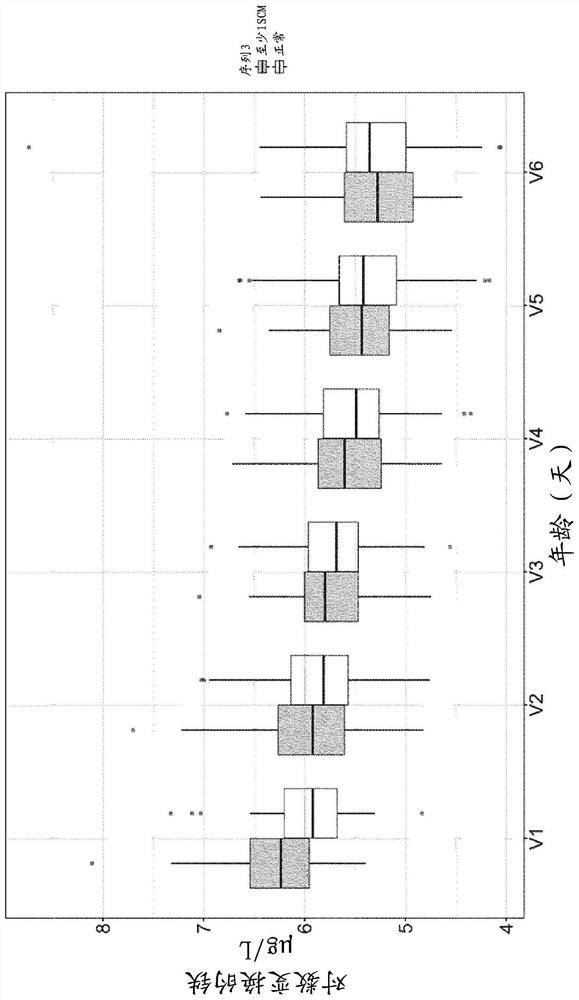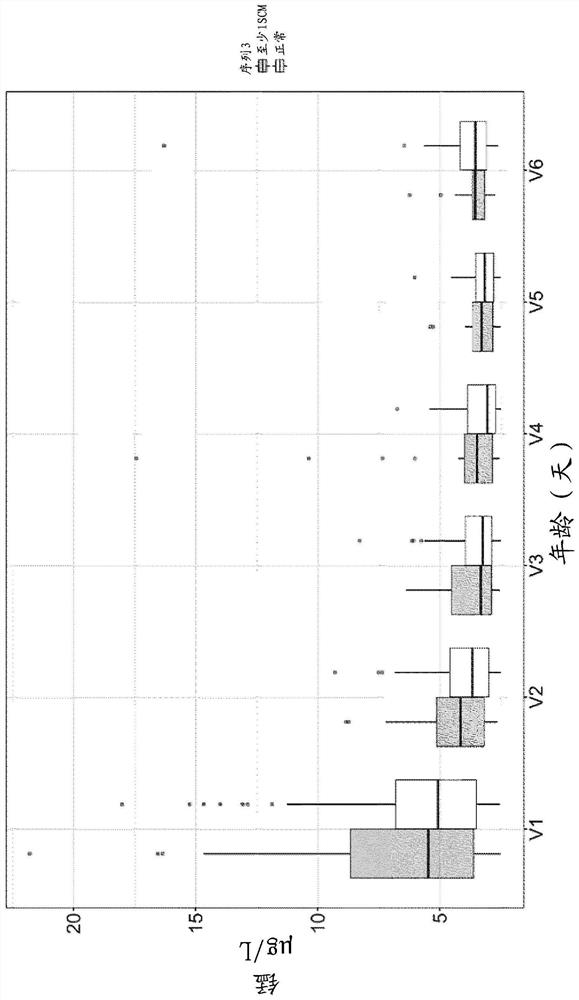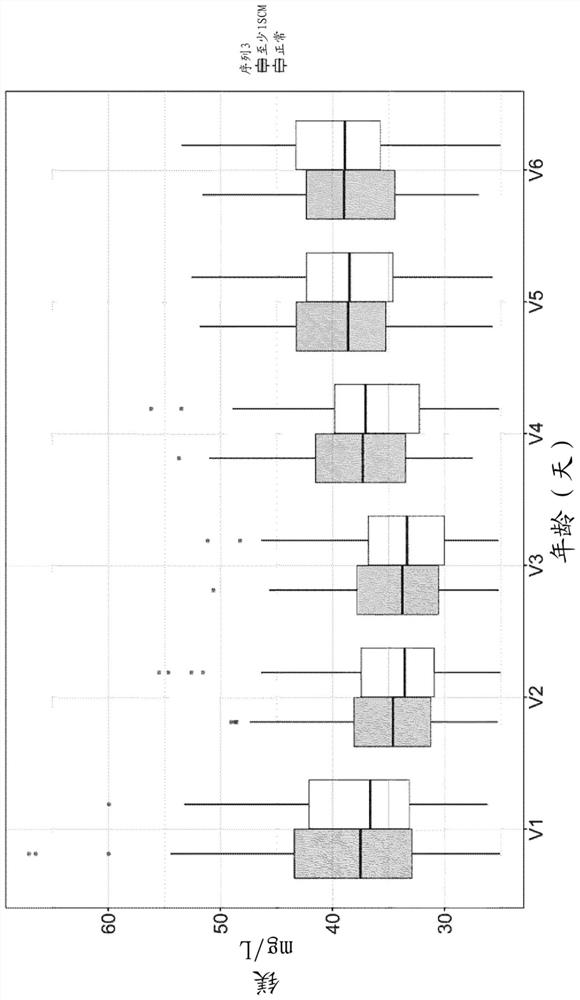Compositions and methods with probiotics and N-3 fatty acids for preventing or treating mastitis
A technique for mastitis, fatty acid, applied in the field of subclinical mastitis, treatment or prevention of mastitis, mastitis such as subclinical mastitis
- Summary
- Abstract
- Description
- Claims
- Application Information
AI Technical Summary
Problems solved by technology
Method used
Image
Examples
Embodiment 1
[0258] method
[0259] In the framework of a multicenter European observational study (the Atlas study of human milk nutrients) characterizing the composition of human milk (HM) in the first four months of lactation, we based on the sodium / potassium (Na / K) ratio in human milk A presentation was made to understand whether there are differences in the composition of human milk between lactating women with subclinical mastitis (SCM) and women without SCM.
[0260] research proposal
[0261] The ATLAS study was conducted in seven European countries (France, Italy, Norway, Portugal, Romania, Spain and Sweden) as longitudinal observational cohorts at six postpartum time points (0-3 days, 17±3 days, 30±3 days) 3 days, 60±5 days, 90±5 days and 120±5 days) human milk and various maternal and infant parameters were collected. The study was approved by the institutional and local ethics committees of each center. Participants provided written informed consent to participate in thi...
Embodiment 2
[0284] method
[0285] research group
[0286] The study used data from "ATLAS", a longitudinal observational study conducted in seven European countries between December 2012 and January 2016. The study was approved by each center's institutional and local ethics committees and is registered with ClincalTrials.gov with the identifier NCT01894893. Maternal and infant demographic data, anthropometric data, and medical history were collected by trained and certified research nurses and assistants.
[0287] Human milk was collected from 305 women in 7 European countries. Of these, 185 provided information on dietary intake. Eight women were further excluded due to missing information, resulting in a final sample size of 177 women. Written informed consent was obtained from all women in their respective local languages.
[0288] SCM analysis
[0289] Throughout the study, milk samples were obtained from the ipsilateral breast at 11:00 am ± 2:00 hours using an electric ...
PUM
 Login to View More
Login to View More Abstract
Description
Claims
Application Information
 Login to View More
Login to View More - R&D
- Intellectual Property
- Life Sciences
- Materials
- Tech Scout
- Unparalleled Data Quality
- Higher Quality Content
- 60% Fewer Hallucinations
Browse by: Latest US Patents, China's latest patents, Technical Efficacy Thesaurus, Application Domain, Technology Topic, Popular Technical Reports.
© 2025 PatSnap. All rights reserved.Legal|Privacy policy|Modern Slavery Act Transparency Statement|Sitemap|About US| Contact US: help@patsnap.com



